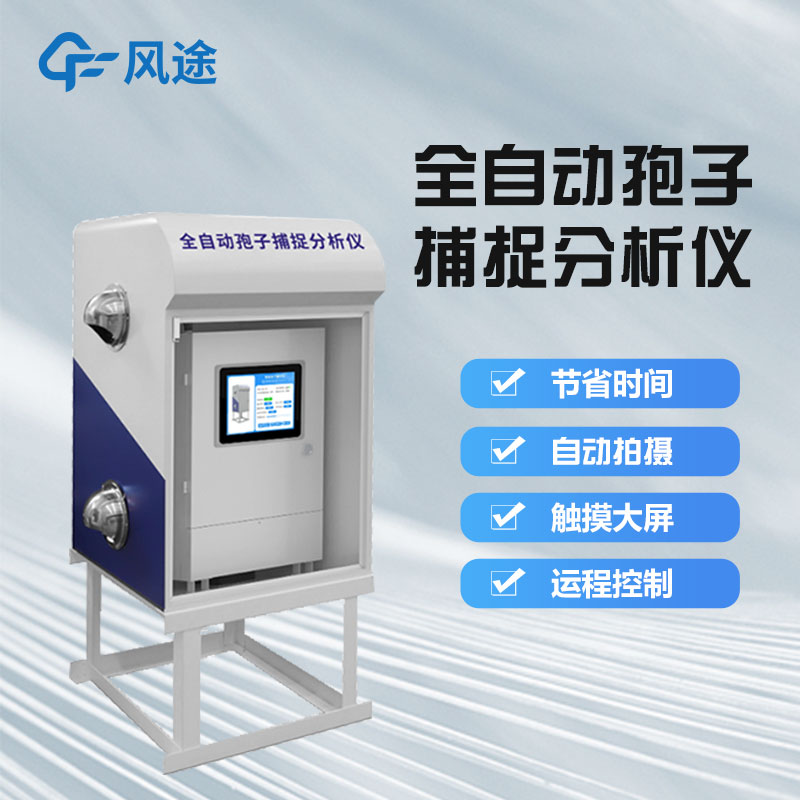Shandong Fengtu IOT Technology Co., Ltd
Sales Manager:Ms. Emily Wang
Cel,Whatsapp,Wechat:+86 15898932201
Email:info@fengtutec.com
Add:No. 155 Optoelectronic Industry Accelerator, Gaoxin District, Weifang, Shandong, China

Sales Manager:Ms. Emily Wang
Cel,Whatsapp,Wechat:+86 15898932201
Email:info@fengtutec.com
Add:No. 155 Optoelectronic Industry Accelerator, Gaoxin District, Weifang, Shandong, China
time:2025-02-27 08:55:56 source:Weather Station viewed:268 time
In agricultural production, diseases pose a serious threat to the growth of crops, which is related to both yield and quality. Spores play a crucial role in agricultural disease monitoring, and the Spore Catcher is a powerful tool for monitoring spores.
Spores: The "Early Warning Signal" of Agricultural Diseases
Many crop diseases are caused by the spread of pathogen spores, such as wheat rust and northern corn leaf blight. Spores are small in size and light in weight, and can disperse in large quantities in the air. Once the environment is suitable, they will infect crops.
Spores can play an early warning role. Before crops get sick, by monitoring the changes in the types and quantities of spores, potential disease risks can be detected. The spores of different pathogens have different characteristics, and based on this, the types of pathogens can be determined, and the diseases can be accurately diagnosed, providing a basis for precise prevention and control.
Continuous monitoring of the concentration, distribution, and diffusion direction of spores helps to understand the transmission rules of pathogens. For example, in areas with strong winds, spores can spread far, and the farmland downwind can be prevented in advance. The number of spores is positively correlated with the severity of the disease. Regularly monitoring the number of spores can assess the development trend of the disease and adjust the prevention and control strategies in a timely manner. According to the spore monitoring data, the timing, methods, and pesticides for prevention and control can also be determined.
Spore Catcher: The "Smart Assistant" for Spore Monitoring
The Spore Catcher is a professional instrument for monitoring pathogen spores, integrating technologies such as aerodynamics and optical microscopic imaging. The instrument generates negative pressure through an air-driven device, draws in air to capture spores, and then uses a high-resolution microscope or an optical imaging system to take pictures, clearly showing the characteristics of the spores.
It can automatically capture spores and take pictures 24 hours a day, reducing the burden of manual work. With a high-pixel camera and a high-power microscope, the spore images taken are clear. It supports multiple communication methods, allowing remote viewing of images and data, and can also remotely control the device parameters. The intelligent instrument has an intelligent statistical analysis function, automatically identifying and counting spores, and generating reports and charts. It can also set the working period according to the habits of pathogens, and has functions such as rain control and lightning protection, adapting to the field environment.
This instrument is widely used in agriculture, forestry, animal husbandry, and other fields where spore diseases are likely to occur.

In meteorology, the accurate measurement of rainfall is an important project. From agricultural irrigation decisions to the planning of urban drainage systems and to meteorological disaster warnings, accurate rainfall data is required. To meet this need, scientists have developed a variety of rain s...
In the process of agricultural development, the construction of unmanned farms has become an important direction for the development of modern agriculture. In this process, Agricultural meteorological stations, by providing refined meteorological services combined with mobile applications, make farm...
In outdoor activity and work scenarios, the dynamic changes of the meteorological environment are directly related to personnel safety and task progress efficiency. Whether it is outdoor exploration, geological prospecting, agricultural field management, or emergency rescue, the outdoor weather is o...
The FT-Y1S metal piezoelectric rain gauge is a high-precision rainfall measurement device suitable for various field monitoring scenarios. It utilizes a PVDF piezoelectric film as its core sensing component, capable of accurately detecting the physical signals generated by raindrop impacts. The sens...